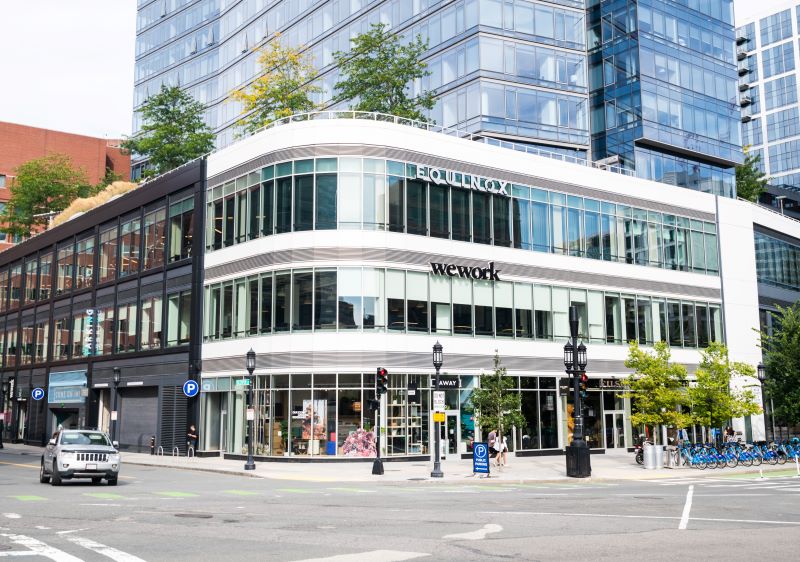
Buying multi-family homes in Boston with no money down may seem impossible, but savvy investors in Boston are using creative strategies to acquire valuable properties without personal cash, credit, or income. The key to real estate success isn’t money—it’s finding excellent deals. When structured correctly, the property is the credit score, attracting the funding and partnerships needed to close the deal.
In this article, we’ll discuss the different no-money-down strategies investors use to source and secure multi-family properties in Boston, even if they have no credit or income.

1. Seller Financing
Seller financing (or owner financing) allows buyers to negotiate directly with property owners to purchase the property with little to no money down. Instead of going through a bank, the seller acts as the lender, providing terms that can be more flexible than traditional financing.
How It Works:
Negotiate a deal where the seller carries the mortgage.
Offer terms that appeal to the seller, such as a slightly higher purchase price or a balloon payment after a few years.
Use the property’s cash flow to pay the seller over time.
Why It Works:
Many property owners prefer to sell via seller financing to defer capital gains taxes or to ensure a steady income stream. The key is finding motivated sellers willing to structure a creative deal.

2. Subject-To (Taking Over the Existing Mortgage)
A subject-to deal allows investors to take control of a property while keeping the seller’s existing mortgage in place. Instead of securing a new loan, you take over the mortgage payments.
How It Works:
Identify a distressed or motivated seller who needs to offload their property quickly.
Agree to take over their mortgage payments.
Secure the property deed in your name.
Generate rental income and use it to pay down the mortgage.
Why It Works:
Distressed homeowners facing foreclosure, divorce, or financial struggles may be eager to walk away from their mortgage. Investors can step in without needing traditional financing as long as the deal cash flows.

3. Lease Options (Rent-to-Own Strategies)
Lease options allow investors to control a property with a small or no initial investment by renting it with an option to buy at a later date.
How It Works:
Negotiate a lease with an option to buy the property.
Secure a long-term lease at a favorable price.
Sublease the property to tenants at a higher rental rate.
Use rental income to fund future purchases.
Why It Works:
This rent-to-own method allows the owner to control the asset without immediate financing. It’s an excellent strategy for properties that need time to appreciate or improve before obtaining permanent financing.

4. Raising Private Capital (O.P.M.—Other People’s Money)
For professional investors, money is the easiest thing to find. The challenge is securing great deals. Investors without personal capital can fund deals by raising private capital- money from private lenders, partners, or real estate syndications.
How It Works:
Find a fantastic deal that has substantial cash flow and appreciation potential.
Pitch the deal to private investors with capital who lack the expertise or time to invest.
Offer them a fixed return on their investment or an equity share in the agreement.
Why It Works:
Wealthy individuals, business owners, and professionals always seek passive income opportunities. A well-structured deal with solid returns easily attracts funding.

5. Wholesaling to Build Capital
Wholesaling is a quick way to generate capital without actually buying a property. In this strategy, an investor finds a distressed property, secures it under contract, and sells that contract to another buyer for a profit.
How It Works:
Locate off-market properties from motivated sellers.
Negotiate a price below market value.
Assign the contract to an end buyer for a fee (typically $5,000-$50,000 per deal).
Why It Works:
Wholesaling doesn’t require cash or credit. It’s purely about finding and controlling great deals and passing them on to investors who can execute them.

6. BRRRR Strategy (Buy, Rehab, Rent, Refinance, Repeat)
The BRRRR method allows investors to acquire properties with little to no money down by refinancing after increasing the property's value through renovations.
How It Works:
Purchase a distressed or underperforming multifamily property.
Renovate the property to increase value and rental income.
Rent it out to generate positive cash flow.
Refinance is based on the new property value and pull-out cash.
Use the money to acquire the next property.
Why It Works:
By using leverage correctly, investors can scale their portfolios while continuously recycling their initial capital.

7. Partnering with Experienced Investors
New investors can acquire multi-family homes by partnering with experienced investors who have access to financing but require hands-on assistance.
How It Works:
Find an experienced investor who needs help sourcing or managing deals.
Offer to handle due diligence, marketing, or property management in exchange for a share of ownership.
Leverage their capital and experience to acquire properties.
Why It Works:
Experienced investors constantly search for new opportunities but may lack the time or local market knowledge. A well-networked beginner can bring value to the table.
No-money-down real estate investing isn’t about having perfect credit or massive cash reserves—it’s about finding great deals. The deal itself is the credit score. The money will follow if an investor secures a cash-flowing multi-family property with strong appreciation potential.
By using creative strategies like seller financing, subject-to-deals, private capital, lease options, wholesaling, and BRRRR, investors in Boston can acquire valuable assets without personal financial constraints. The key is being resourceful, knowing how to structure deals, and leveraging relationships to turn opportunities into wealth.
Disclaimer: The information provided in this article is for general informational purposes only and should not be construed as legal, financial, or real estate advice. While we strive to ensure accuracy, policies and regulations may change, and individual circumstances may vary. Readers are encouraged to conduct their own research and consult with legal advisors and/or local authorities before making any housing or investment decisions. The opinions expressed are those of the author and do not necessarily reflect the views of any affiliated organizations or entities

Kristian Kotov
Published March 3, 2025










